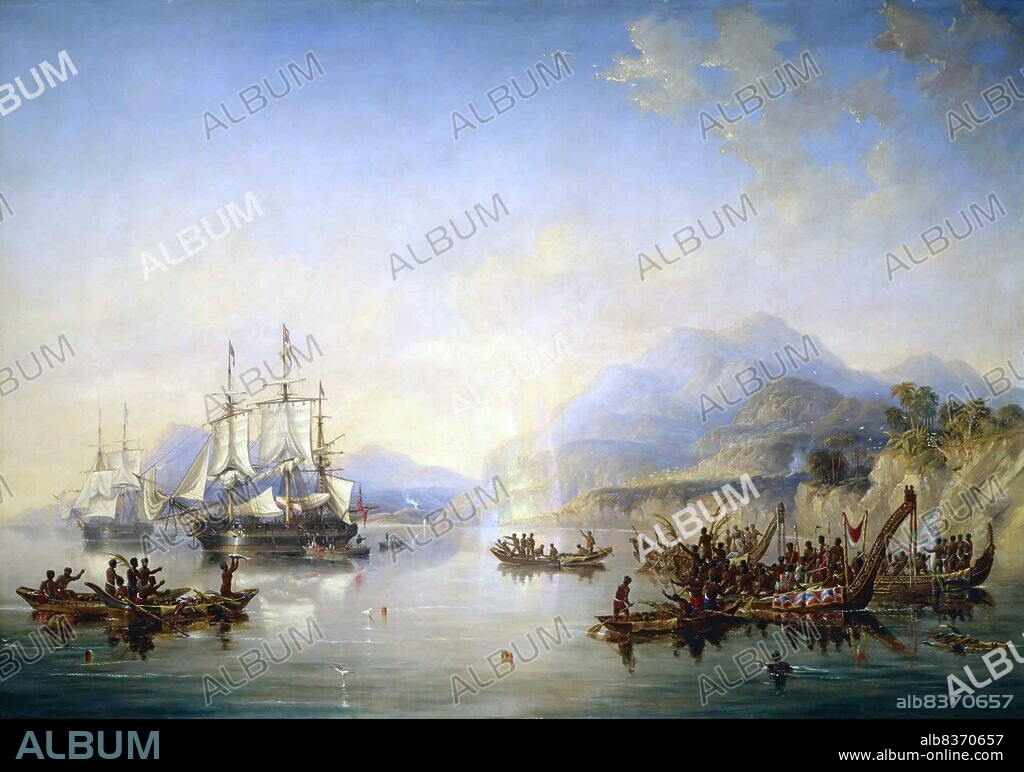alb8370657
UK / New Zealand: 'Erebus and Terror in New Zealand, August 1841', Ross Expedition, oil on canvas, John Wilson Carmichael (1800-1868), c. 1847

|
Añadir a otro lightbox |
|
Añadir a otro lightbox |



¿Ya tienes cuenta? Iniciar sesión
¿No tienes cuenta? Regístrate
Compra esta imagen.
Selecciona el uso:

Título:
UK / New Zealand: 'Erebus and Terror in New Zealand, August 1841', Ross Expedition, oil on canvas, John Wilson Carmichael (1800-1868), c. 1847
Descripción:
Ver traducción automática
The Ross expedition was a voyage of scientific exploration of the Antarctic in 1839 to 1843, led by James Clark Ross, with two unusually strong warships, HMS Erebus and HMS Terror. It explored what is now called the Ross Sea and discovered the Ross Ice Shelf. On the expedition, Ross discovered the Transantarctic Mountains and the volcanoes Erebus and Terror, named after his ships. The young botanist Joseph Dalton Hooker made his name on the expedition.
. The expedition inferred the position of the South Magnetic Pole, and made substantial observations of the zoology and botany of the region, resulting in a monograph on the zoology, and a series of four detailed monographs by Hooker on the botany, collectively called Flora Antartica and published in parts between 1843 and 1859. The expedition was the last major voyage of exploration made wholly under sail.
. The expedition inferred the position of the South Magnetic Pole, and made substantial observations of the zoology and botany of the region, resulting in a monograph on the zoology, and a series of four detailed monographs by Hooker on the botany, collectively called Flora Antartica and published in parts between 1843 and 1859. The expedition was the last major voyage of exploration made wholly under sail.
Crédito:
Album / Universal Images Group / Pictures From History
Autorizaciones:
Modelo: No - Propiedad: No
¿Preguntas relacionadas con los derechos?
¿Preguntas relacionadas con los derechos?
Tamaño imagen:
4968 x 3486 px | 49.5 MB
Tamaño impresión:
42.1 x 29.5 cm | 16.6 x 11.6 in (300 dpi)
Palabras clave:
1841 • 1847 • ART • ARTE • ARTES • BARCO • BRITANICA • BRITANICO • BRITANICOS • DESCUBRIMIENTO • EXPLORACION • GRAN BRETAÑA • HMS • INGLATERRA • INGLES • INGLESA • INGLESES • JOSEPH • MARINA REAL INGLESA • MARITIMO • NAVAL • NUEVA ZELANDA • PINTURA • REINO UNIDO • S. XIX • SIGLO XIX • TERROR • TRANSPORTE • WILLIAM
 Pinterest
Pinterest Twitter
Twitter Facebook
Facebook Copiar enlace
Copiar enlace Email
Email
